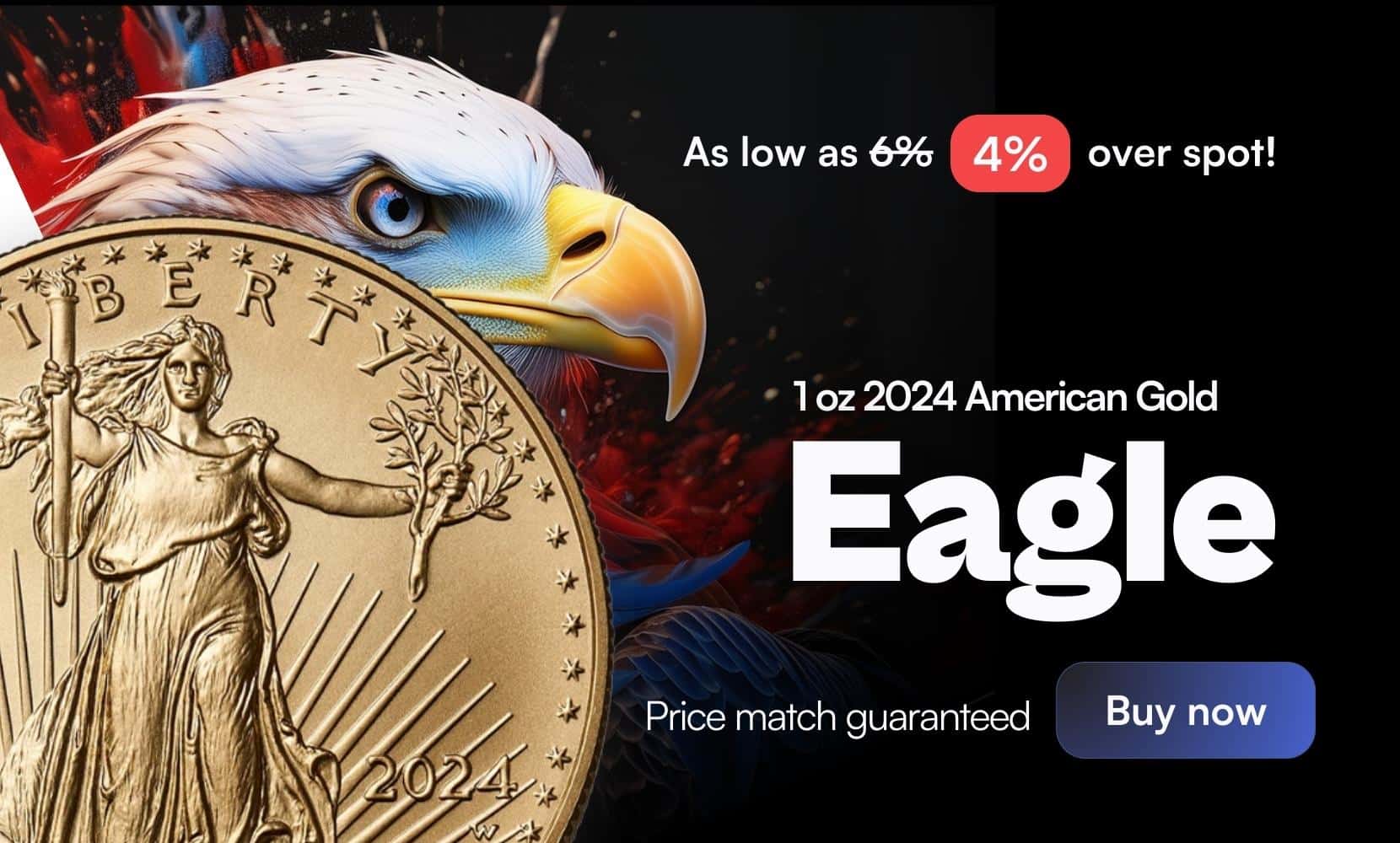Disclaimer: Accurate Precious Metals is not a financial advisor. We encourage everyone to consult a financial advisor or CPA. They can help determine the best investment strategies. Our mission is to provide educational content about precious metals. Accurate Precious Metals is committed to transparency and reliability. They offer top-tier precious metal products and information.
The Flying Eagle cent was minted from 1856 to 1858. It holds a special place in the history of United States coins. It represents both historical importance and artistic success. For coin collectors and numismatists, these cents offer an incredible glimpse into a transitional period in U.S. Mint history. This article will guide you through the captivating world of Flying Eagle pennies, their value, and why they remain a sought-after collectible. Whether you’re a seasoned collector or a novice, you’ll find valuable insights and information that could potentially enrich your collection.
Article Outline
- What Makes Flying Eagle Cents Unique?
- Why Were Flying Eagle Cents Minted Only Between 1856 and 1858?
- Significance of 1856 Flying Eagle Cents
- Value of 1857 Flying Eagle Cents
- The 1858 Flying Eagle Cents: Large Letters vs. Small Letters
- Design Elements of the Flying Eagle Cent
- How to Evaluate Flying Eagle Cents Using PCGS
- Common Errors Found in Flying Eagle Cents
- Where to Buy Flying Eagle Cents: Accurate Precious Metals
- Frequently Asked Questions
What Makes Flying Eagle Cents Unique?
The Flying Eagle cent stands out due to its iconic design and historical context. Chief Engraver James B. Longacre designed these coins featuring an eagle on the obverse side, a significant shift from the earlier large cent designs. This shift marked the transition from large cents to smaller, more convenient coins suitable for everyday transactions.
Additionally, the Flying Eagle cent was composed mainly of pure copper, unlike its large predecessors, making it more economical to produce. Its brief yet impactful mintage between 1856 and 1858 adds an element of rarity, enhancing its allure among collectors.
Why Were Flying Eagle Cents Minted Only Between 1856 and 1858?
The Flying Eagle cent’s brief mintage was due to practical reasons. The design was prone to premature die clogging and wear, making it expensive and inefficient for the United States Mint to produce. Consequently, the Mint adopted the Indian Head cent in 1859, which proved to be more durable and cost-effective.
Additionally, the Flying Eagle center suffered from mixed public reception. While appreciated for its design, it often did not circulate well, leading to its replacement. However, its short duration of existence makes it a valuable piece of U.S. coinage history.
Significance of 1856 Flying Eagle Cents
The 1856 Flying Eagle cent holds immense significance as the key date coin. Initially struck as a pattern coin, it quickly garnered attention and became a collector’s treasure. The estimated mintage of these coins is around 2,000, making them extremely rare and highly coveted.
Values for 1856 Flying Eagle cents vary significantly based on their condition and grade. They are often sold for thousands of dollars at auction, and collectors consider them essential for completing a set of Flying Eagle pennies.
Value of 1857 Flying Eagle Cents
The 1857 Flying Eagle cents are significant as they mark the first full year of production for this series. With a higher mintage than its 1856 counterpart, it is more accessible but no less important. Coin values for the 1857 Flying Eagle cent remain robust, thanks to its historical significance and attractiveness.
Collectors use the PCGS price guide to evaluate these coins accurately. Well-preserved specimens generally command a premium, and numismatists and enthusiasts value them much more.
The 1858 Flying Eagle Cents: Large Letters vs. Small Letters
The 1858 Flying Eagle cent comes in two major varieties: Large Letters and Small Letters. The difference lies in the font size of the letters on the reverse side. Collectors often seek to identify and own both varieties, adding a layer of complexity and intrigue to their collections.
Pricing for these varieties can differ based on rarity and condition. Generally, Small Letters coins tend to be more plentiful, but collectors prize both styles. The distinctions between these varieties can be easily evaluated using the PCGS grading system.
Design Elements of the Flying Eagle Cent
Chief Engraver James B. Longacre designed the Flying Eagle cent, featuring an eagle soaring in flight on the obverse and a simple wreath on the reverse. This design was a departure from earlier, complex patterns. It showed the desire for a simpler but impactful coin design.
The “large letters” and “small letters” varieties further distinguish the 1858 Flying Eagle cents, adding unique nuances to each coin. Collectors also pay attention to the coin’s luster and potential wear, which significantly impact its value and desirability.
How to Evaluate Flying Eagle Cents Using PCGS
Professional Coin Grading Service (PCGS) offers a comprehensive standardized grading scale to evaluate Flying Eagle cents. This grading system assesses factors such as condition, strike quality, and any potential flaws or errors in the coin. PCGS-certified coins often command higher values due to their verified authenticity and grade.
Collectors use the PCGS price guide and population reports to understand better the market for Flying Eagle cents. This resource provides current coin values and trends, assisting in making informed purchasing or selling decisions.
Common Errors Found in Flying Eagle Cents
Like all coins, Flying Eagle cents have their share of mint errors, adding to their allure and value. Some common errors include double strikes, off-center strikes, and die breaks. The errors range from tiny mistakes to big anomalies. They often make a coin more desirable to collectors.
Understanding these errors and learning how to identify them is crucial for collectors. PCGS and other grading services can authenticate and certify these errors, helping collectors accurately assess their coin’s value and rarity.
Where to Buy Flying Eagle Cents: Accurate Precious Metals
Accurate Precious Metals offers a reliable platform for buying or selling Flying Eagle cents. They provide accurate information, transparent pricing, and a commitment to quality, making them a trusted source for rare coins.
Although Accurate Precious Metals does not currently offer storage services for metal products, they plan to introduce this feature in the future. Buyers can feel confident in their purchases, knowing they are dealing with a reputable dealer who prioritizes customer satisfaction.
Frequently Asked Questions
Are Flying Eagle Cents pure copper?
Yes, Flying Eagle cents are mainly composed of pure copper. This composition was chosen for its cost-effectiveness and durability, particularly compared to the previous large cent coins.
How can I determine the value of my Flying Eagle cent?
Determining the value of your Flying Eagle cent involves evaluating its condition, rarity, and any potential errors. Use resources such as the PCGS price guide. Also, consult with dealers like Accurate Precious Metals. They can provide accurate and up-to-date valuations.
What distinguishes the 1858 Large Letters and Small Letters varieties?
The primary difference between the 1858 Large Letters and Small Letters Flying Eagle cents lies in the size of the lettering on the coin’s reverse. Collectors often seek both varieties to complete their collections, and pricing can vary based on condition and rarity.
What should I look for when buying a Flying Eagle cent?
When buying a Flying Eagle cent, consider factors such as the coin’s condition, the presence of any major errors, and verification of authenticity from trusted grading services like PCGS. Also, ensure you purchase from reputable dealers such as Accurate Precious Metals.
How does PCGS grading impact the value of Flying Eagle cents?
PCGS grading significantly impacts the value of Flying Eagle cents, as it provides a standardized and trusted assessment of the coin’s condition. Coins with higher PCGS grades generally command higher prices and are more desirable to collectors.
Summary
- Flying Eagle cents were minted only between 1856 and 1858, adding to their rarity and value.
- The 1856 Flying Eagle cent is particularly significant and highly coveted by collectors.
- Collectors value the 1857 Flying Eagle cent for its historical importance and accessibility.
- 1858 Flying Eagle cents come in two varieties: Large Letters and Small Letters.
- PCGS offers a standardized grading system that helps determine the value and authenticity of Flying Eagle cents.
- Common mint errors can increase the allure and value of Flying Eagle cents.
- Accurate Precious Metals is a trusted dealer for buying and selling Flying Eagle cents.
Sources
- “Flying Eagle Cent 1856-1858.” PCGS CoinFacts, https://www.pcgs.com/coinfacts/category/early-cents/flying-eagle-cent-1856-1858/6816.
- “1856-1858 Flying Eagle Cents.” NGC Coin Price Guide, https://www.ngccoin.com/price-guide/united-states/flying-eagle-cents-1856-1858-cid3.
- “Flying Eagle Cent.” Wikipedia, https://en.wikipedia.org/wiki/Flying_Eagle_cent.
 Have a question?
Have a question?










